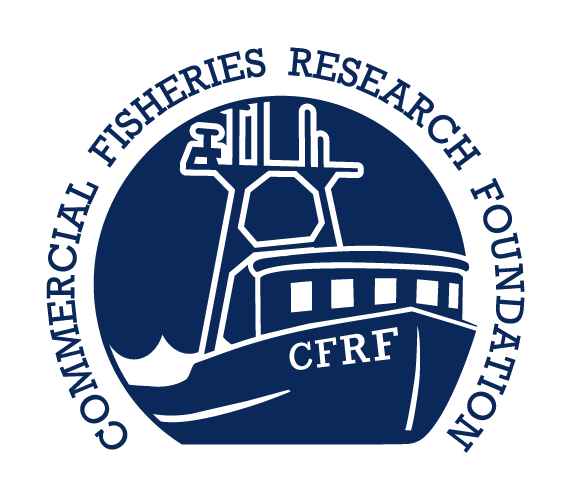On July 12th, the CFRF hosted a meeting in which Dr. David Richardson and Dr. John Manderson from the Northeast Fisheries Science Center (NEFSC) presented, to a room full of fishing industry members and fisheries scientists, the most recent research findings and further questions being investigated about the squid resources along the East coast.
Dr. Richardson presented recent findings made while analyzing past NEFSC offshore plankton trawl survey data. The offshore NEFSC plankton trawl began in the 1970s and has sampled 6 times every year since. While analyzing the larval squid samples, the diversity off the East coast was startling, with up to 25 different squid species being found. Longfin squid accounted for the greatest abundance within the larval samples (85-90%). Relying on larval surveys and aging databases, Dr. Richardson has begun to determine where the squid found in the Northeast could be originating from. As squid are a short-lived species, typically living only 6-9 months, the location of squid larvae throughout the year indicate where and when adult squid are spawning. Dr. Richardson has found that squid larvae are nearly absent from the Northeast shelf during winter months, suggesting that the squid that support the summer fishery originate elsewhere. The most probable point of origination/spawning is the Southeast shelf, where larval squid are abundant during winter months. Squid spawned in the Southeast during the winter could be transported northward via the Gulf Stream to recruit into the Northeast squid fishery during the spring and summer. During the summer months, larval squid are abundant across the Northeast continental shelf. It is believed that these squid remain in the Northeast and recruit into the fishery in the fall and winter.
Dr. Manderson presented a summary of his research surrounding methods for monitoring and managing fisheries utilizing real-time oceanographic technology and catch monitoring systems. With the system applied in the squid fishery, Manderson is able to monitor how the squid fishery and landings respond to changing oceanographic conditions. Ultimately, this type of automatic analysis system could be utilized by individual fishermen to target locations based on ideal oceanographic conditions. One specific example that Dr. Manderson provided was to target specific temperatures and salinities to maximize target species abundance and minimize bycatch. On a larger scale, this approach could be applied to monitor how the oceanographic conditions are evolving over a region throughout each season to begin to predict the potential appropriate harvest levels based on those conditions.
For a full audio recording of the presentation contact Thomas Heimann, CFRF Research Associate, at theimann@cfrfoundation.org or 401-515-4892.

